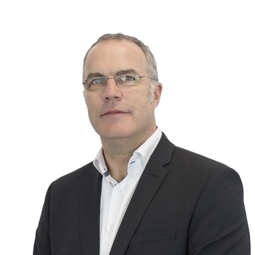Supporting Sustainability: A Case Study from Inspiration Healthcare
Inspiration Healthcare Group plc is a global provider of medical technology for critical care and operating theatres, with a focus on neonatal care. A proud advocate for UK manufacturing, we are committed to both people and planet, and how the sustainable option does not mean you have to compromise on quality and comfort. We recently moved into a new manufacturing and technology centre in Croydon, consolidating three warehouses into one environment, and starting with the skeletons of the structures, our facility has been specifically built with circularity in mind.
Energy Use
Energy use has been utilised naturally throughout the buildings. With solar panels on the roof and solar thermal at the heart of the design, both electricity and hot water are created by solar energy and air source recovery systems, transferring natural sun and heat from outside into heating within the building.
Air conditioning is considered the last resort for us, therefore the buildings have been designed for natural ventilation, expelling hot air and drawing in cool air in the warmer months, and holding warm air in the cooler months. As the ceilings have not been lowered to allow for fitting air conditioning, this allows for natural light to enter the building through clear plastic in the roof. This, combined with the many other windows around the building, mean the amount of electricity used for lighting is drastically reduced as employees opt for the natural alternative. Where natural light is not possible, LED lights have been installed as the next best option.
Alongside the above, our internal landscaping has been designed by a specialist as a natural means of carbon reduction using plants. There are charging points for electric cars, of which our fleet is now 65% of the way to its journey of being fully electric. Solar glass has been used in windows to prevent excessive solar heat gain and prevent stored heat from leaving the building. There are many ways to reduce your energy usage other than purely using renewable energy, and we are exploring some of the great options available.
Efficiencies
Efficiency gains make a positive impact in terms of cost, but also waste. Becoming more efficient as an organisation is a win-win for both the environmental impact and our bottom line, which is why we have considered efficiency at every step of the process.
With state of the art warehouse automated systems, the 11 metre tall buildings are utilised vertically as well as horizontally. The physical design of the facility ensures movement around the building makes the most sense for all employees, no matter the job role. A cardboard compactor reduces the size of the recycling leaving the facility by mass amounts, reducing large vehicle journeys. All of our supply chain partners exclusively use repackable/reusable containers, decreasing the amount of packing used along the supply chain. Through hot desking and using laptops to call each other, rather than having work phones, it saves co2 emissions that would have been emitted through production of the phones themselves, as well as the costs to buy the phones, and stops restrictions of where employees can work from and the need for each employee to have their own desk. It is far more sustainable to reduce the amount of resources you are using, rather than try and compensate for them somehow.
Employee Wellness
Our team is at the very heart of all of our decisions. Often forgotten is the social side of sustainability; it is not all about reducing emissions. Ensuring you have a healthy and happy workforce is crucial to the positive running of a business. That is why we have offered different working patterns for colleagues. Either a compressed four day working week with longer hours, aiding in both reducing carbon emissions from travelling to work and costs for both the travel and, for example, childcare, or a five day working week with the option to work from alternative locations for two days per week, also helping in reducing travel. Once again, a win-win scenario. Having had this way of working in place for a while, we have not seen a reduction in productivity, rather, it has increased.
Within the building itself, the natural light and plants help in terms of carbon emissions, but also create a nicer environment for employees, especially in terms of supporting mental health. There are facilities so that, depending on what is most appropriate, our employees can get the train, tram, bus, cycle, walk or run to walk; the location was chosen with these options in mind. There are showers, changing facilities and washing utilities available to be used, and a cycle to work scheme has been put in place, to encourage both mental and physical health.

Neil Campbell, Chief Executive



